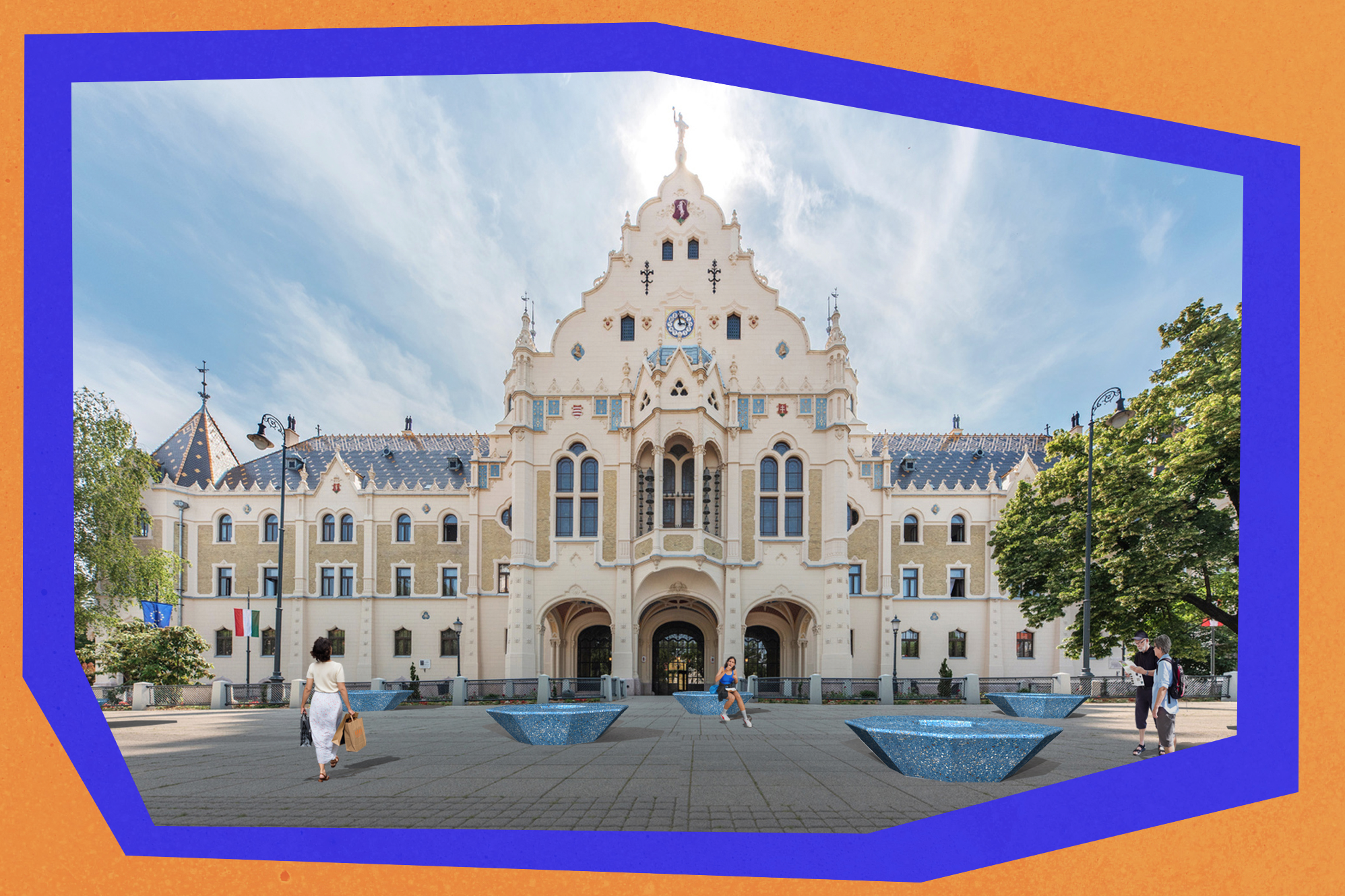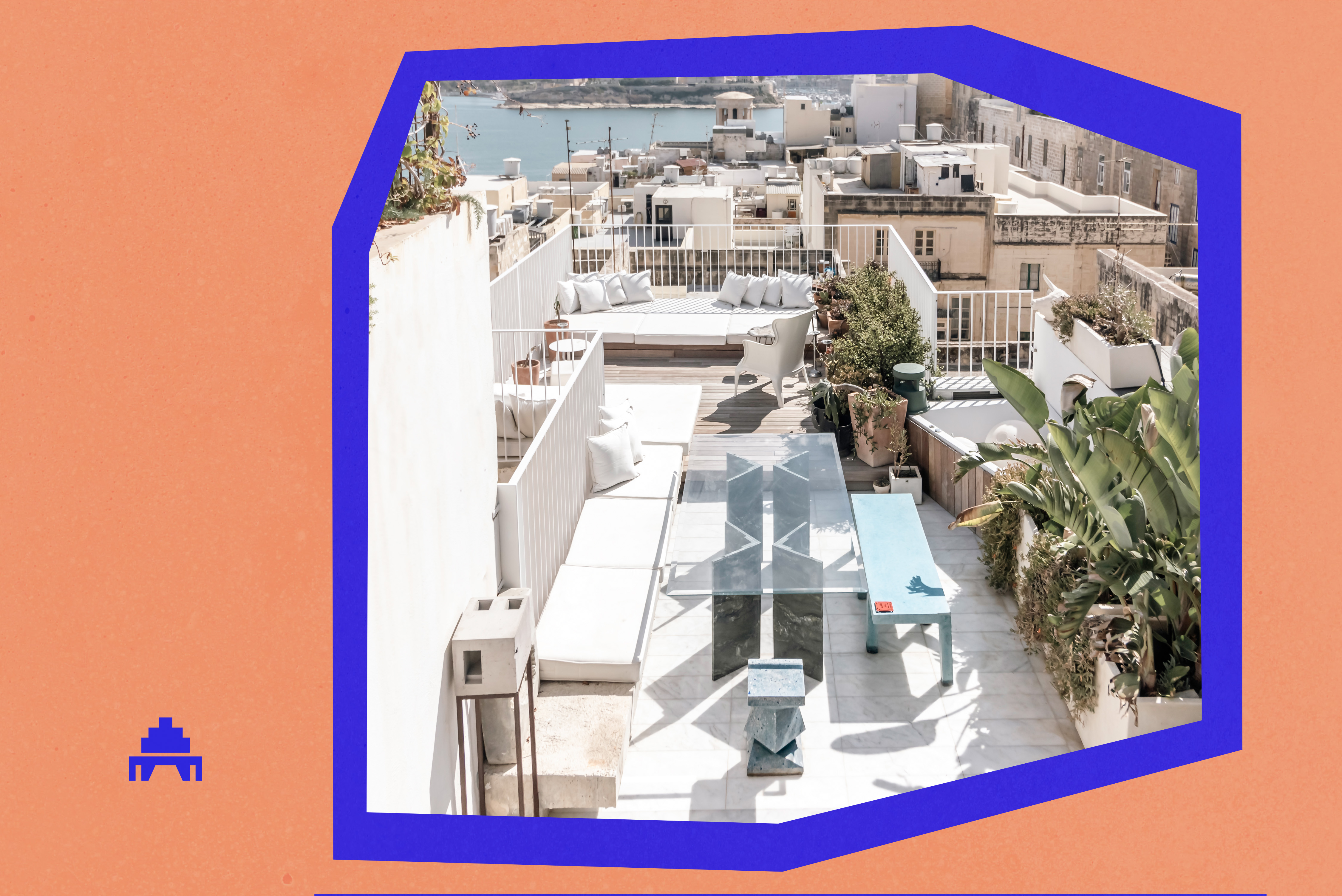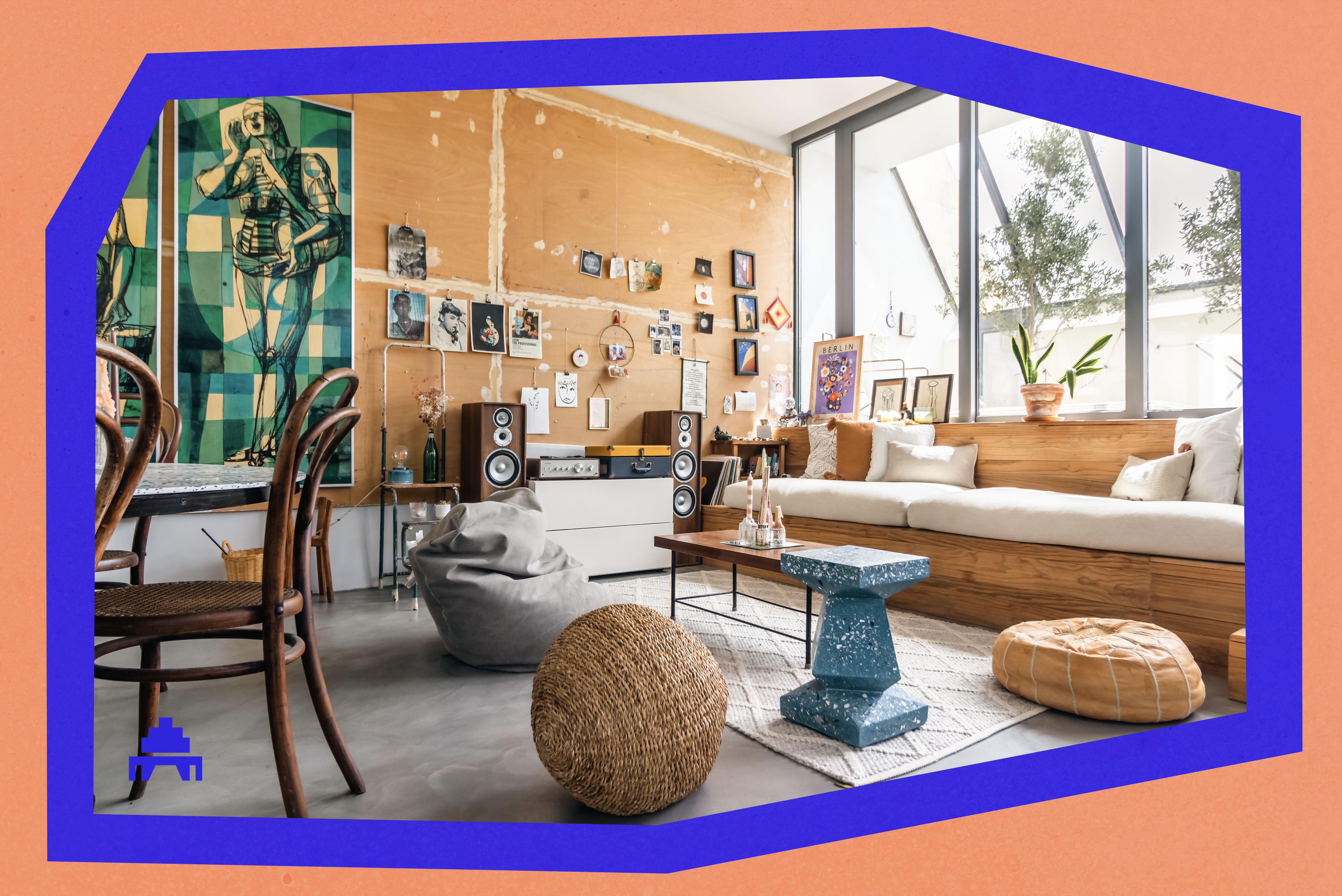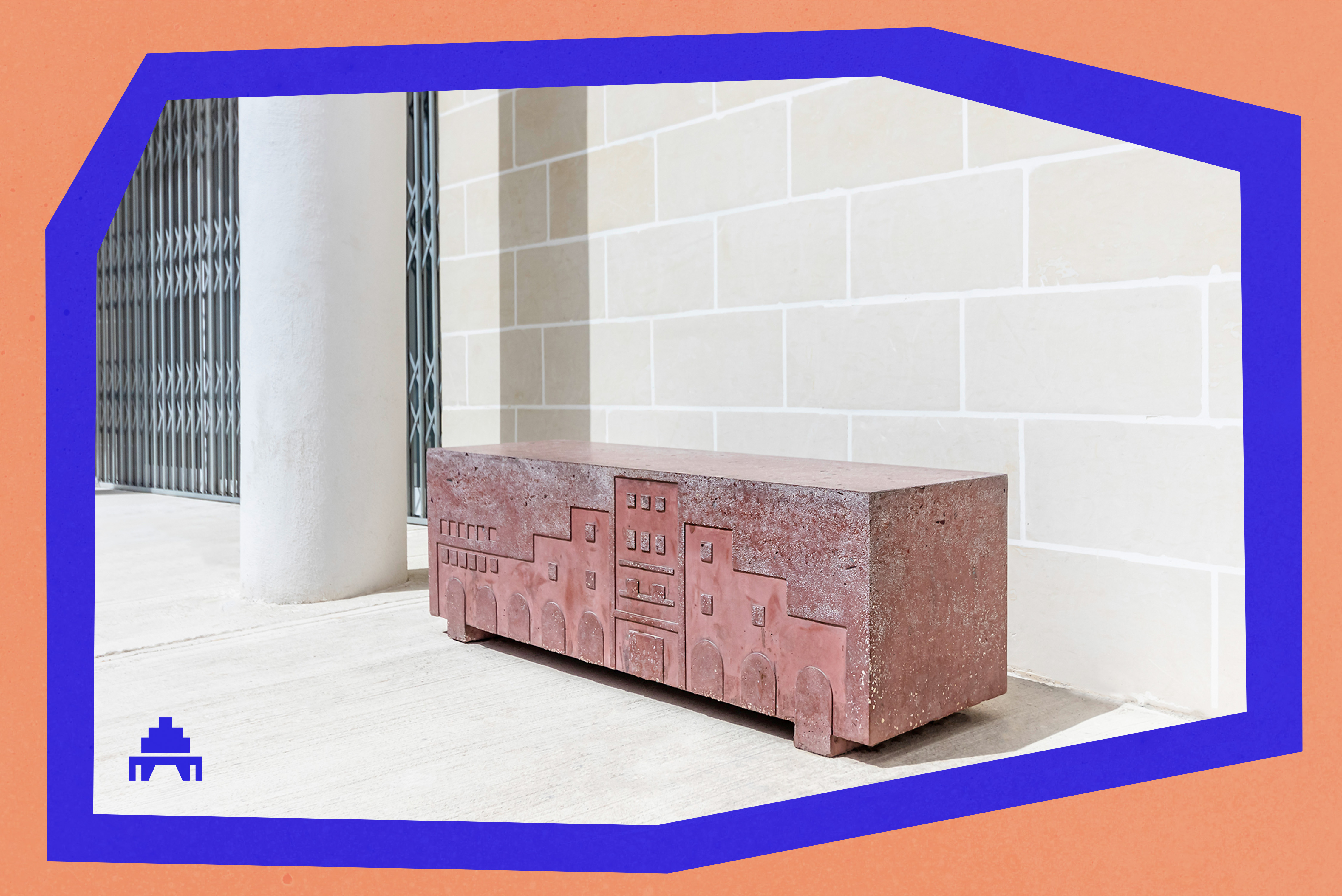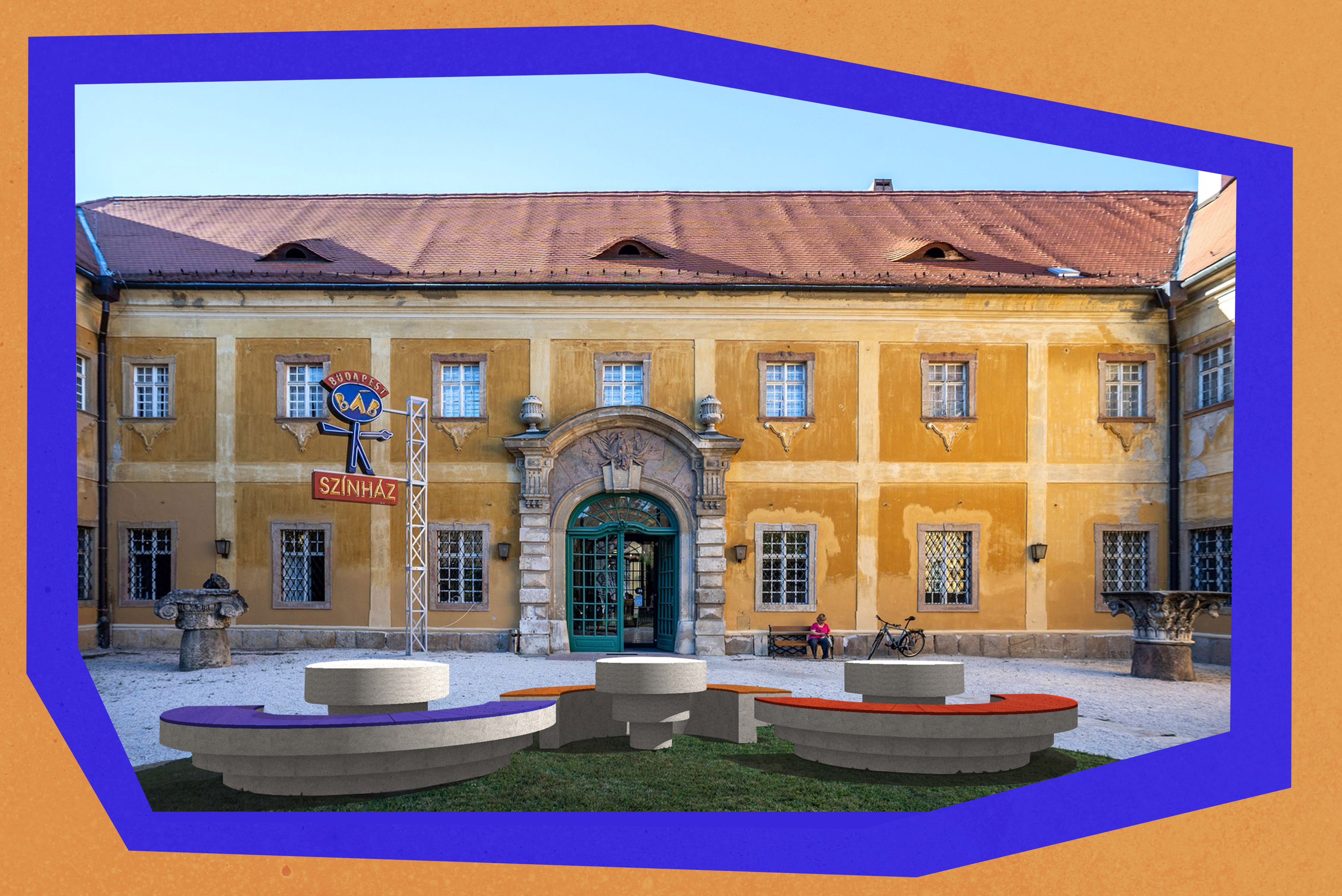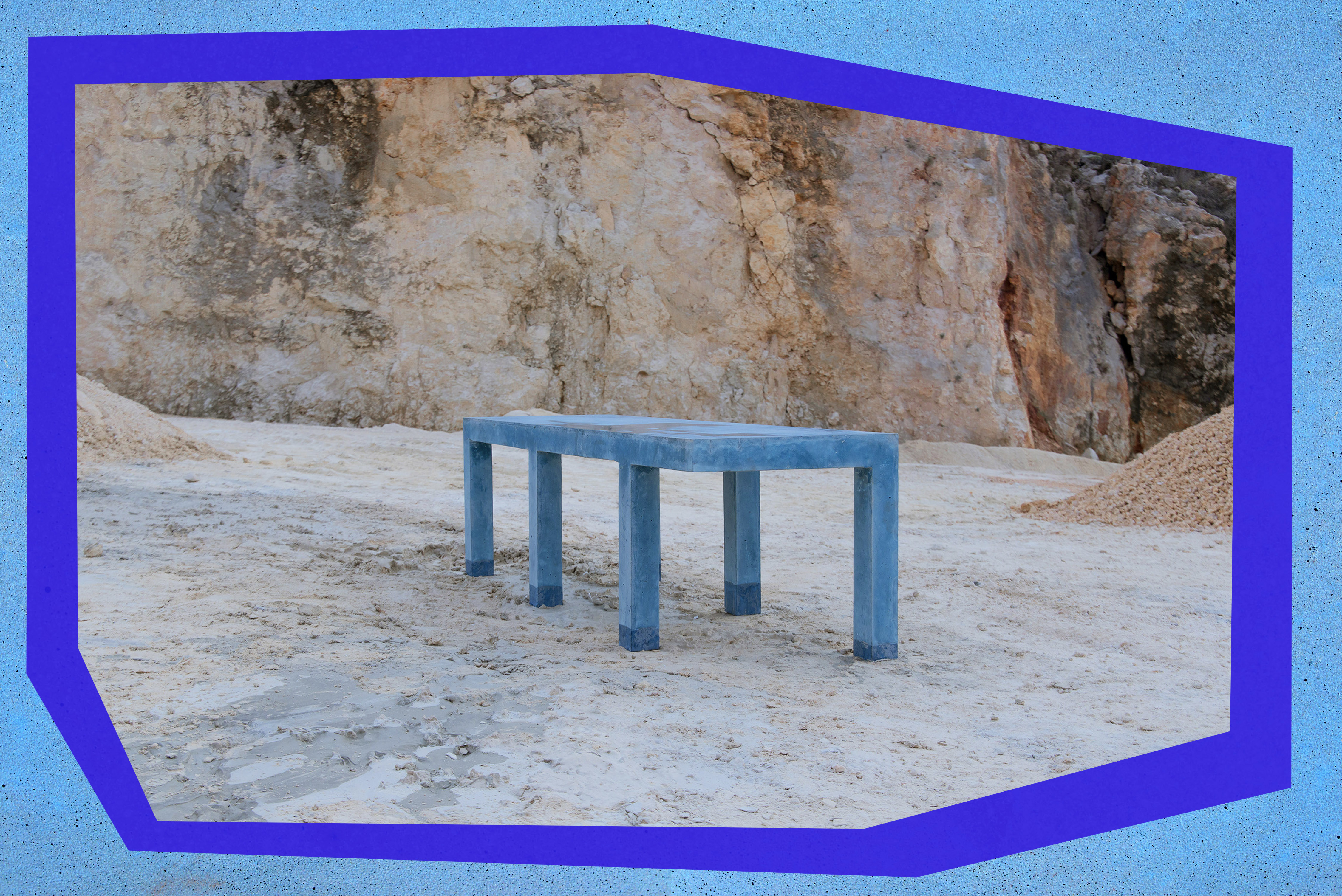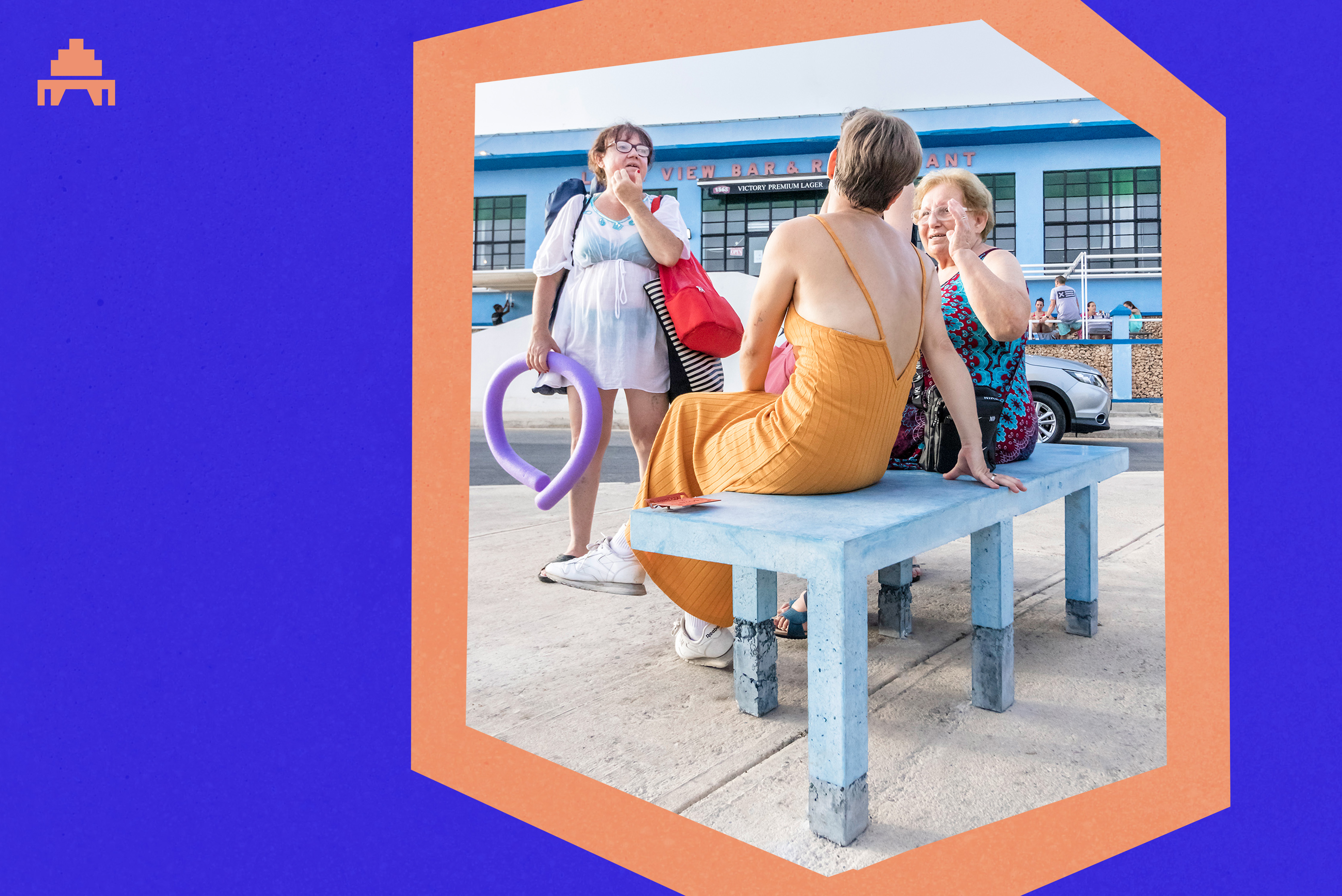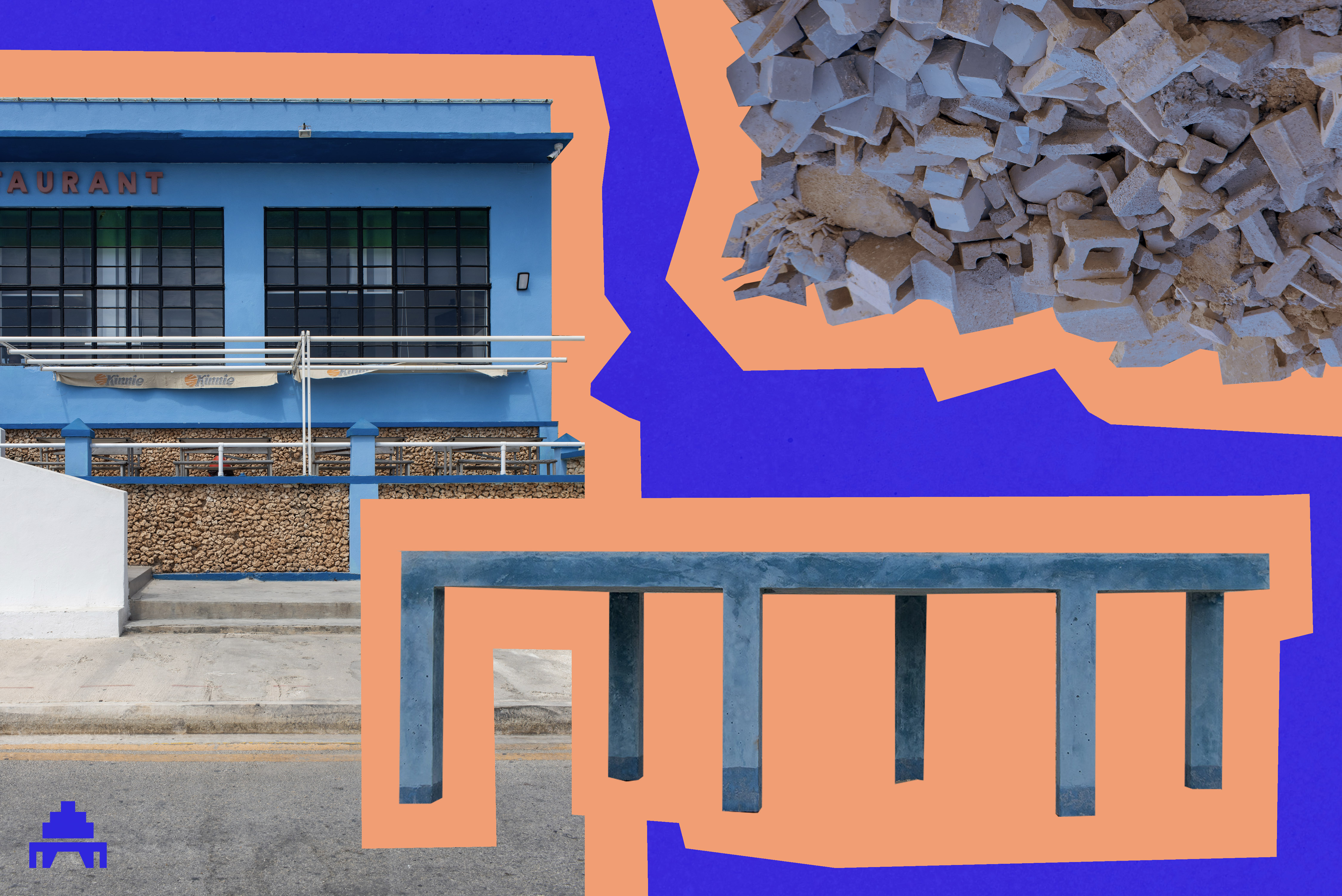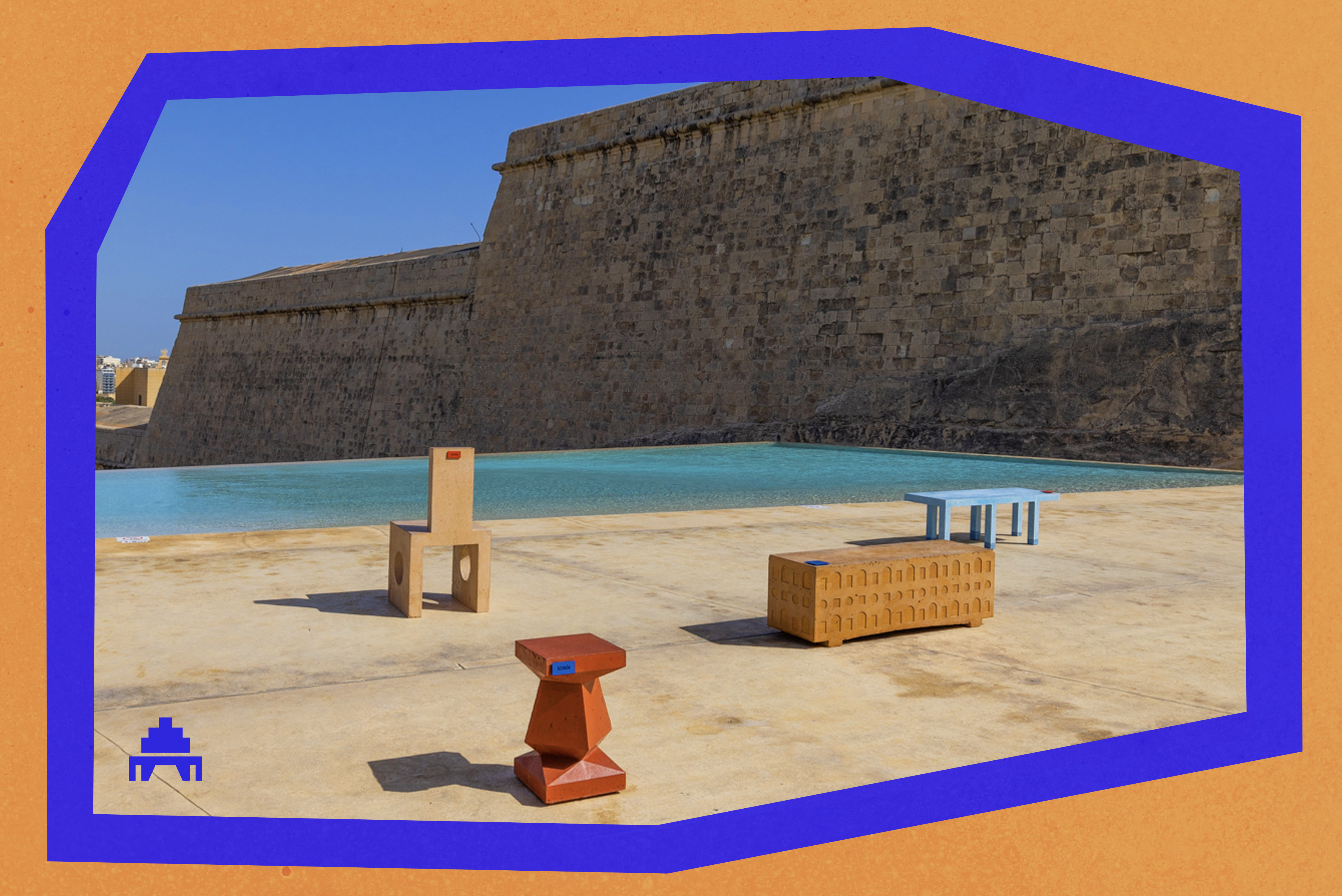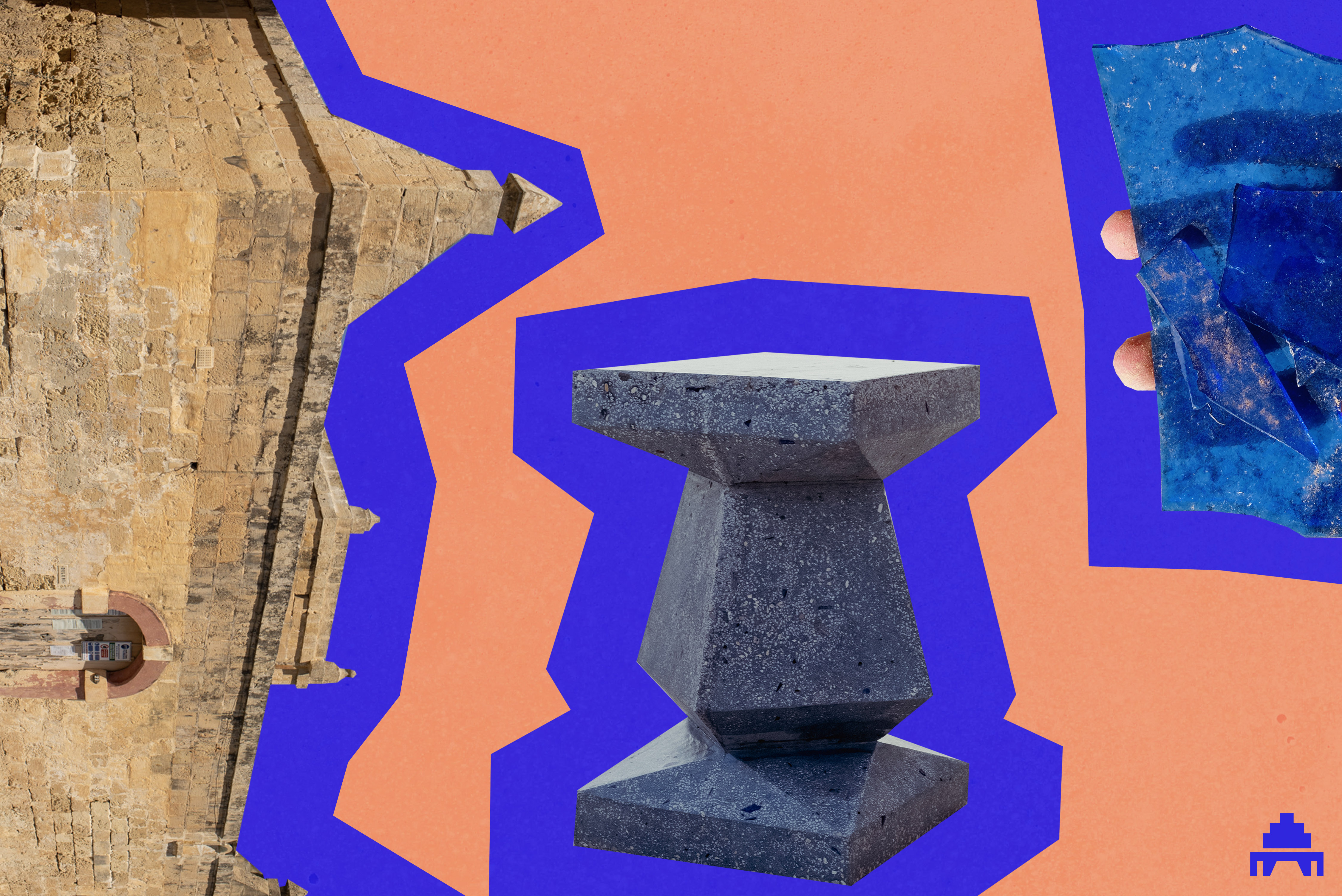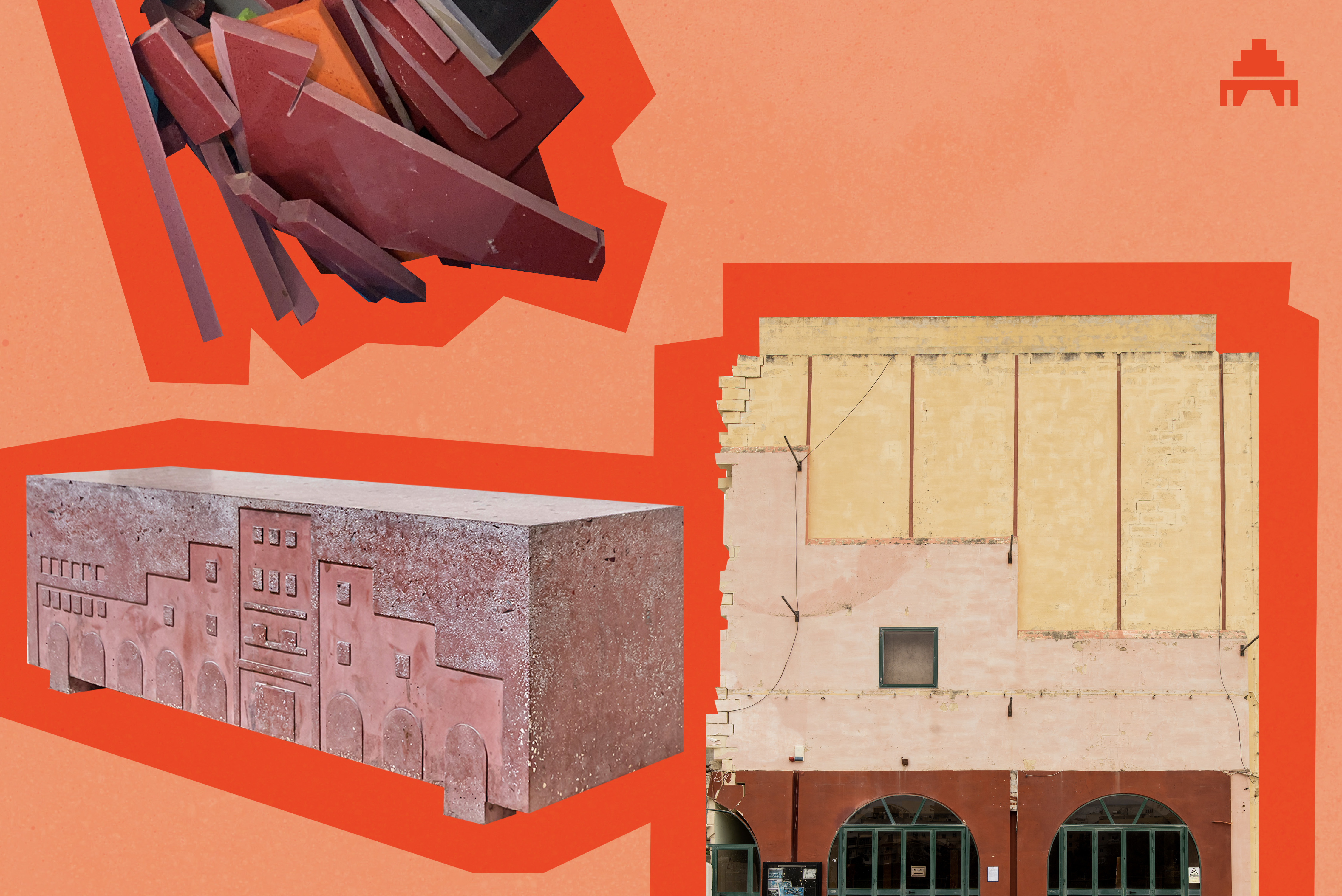Regaining a sense of belonging
SORĠI
SORĠI
SORĠI is a creative start-up finding opportunities for circularity in the construction industry, whose first outcome is an outdoor furniture collection for public spaces, highly critical of the booming construction industry. Unique benches inspired by iconic buildings affected by the local construction frenzy and made of recycled construction waste. The pieces stand both as a memento of today’s choices and a suggestion for tomorrow’s actions.
Malta
National
It addresses urban-rural linkages
It refers to a physical transformation of the built environment (hard investment)
Yes
2023-07-20
Yes
EIT Climate KIC Stage 1
No
No
As an individual
SORĠI is a creative start-up finding opportunities for circularity in the construction industry, whose first outcome is an outdoor furniture collection for public spaces, highly critical of the booming construction industry. Unique benches inspired by iconic buildings affected by the local construction frenzy and made of recycled construction waste. The pieces stand both as a memento of today’s choices and a suggestion for tomorrow’s actions.
Architectural heritage
Demolition
Construction waste
City-branding
Phygital
SORĠI provides practical solutions for the alternative use of the sheer amount of discarded material that keeps accumulating on the planet, while promoting circularity and heritage protection.
The world’s second-most used material is concrete after water, with a production cycle that emits millions of tons of CO2 into the atmosphere. In order to lower its carbon-footprint, SORĠI uses alkali-activated cements instead of the traditional Portland cement. The concrete objects were made using other supplementary materials like fly ash along with an alkaline activator to create high strength and durability. Throughout the production several materials were considered and tested, including fragments of glass, recycled concrete and marble offcuts: all valuable resources, currently being dumped in landfill sites at their full capacity already.
Some of SORĠI’s first collection pieces were made of terrazzo recycling aggregates, and incorporated recycled glass, marble, or other repurposed materials. The off cuts were collected from local marble, stone and glass suppliers.
The prototyping and production phases involved collaborations with local craftsmen, and focused on utilising traditional production methods and local resources of natural origins whenever possible – natural pigments, for example, were tested as a way to add colour and to create extraordinary textures, enhancing the uniqueness of each bench. Besides the materials, we focus on sustainability in terms of energy and machinery too. After the first years of development of our own machinery, we realised that our production can be carried out by the machinery of existing factories.
The core ambition of SORĠI is also to shine light on the lack of appreciation towards the formal protection of modern architecture. SORĠI aims to protect the selected buildings for their architectural value, and also because ‘the most sustainable building is the one that is already built’.
The world’s second-most used material is concrete after water, with a production cycle that emits millions of tons of CO2 into the atmosphere. In order to lower its carbon-footprint, SORĠI uses alkali-activated cements instead of the traditional Portland cement. The concrete objects were made using other supplementary materials like fly ash along with an alkaline activator to create high strength and durability. Throughout the production several materials were considered and tested, including fragments of glass, recycled concrete and marble offcuts: all valuable resources, currently being dumped in landfill sites at their full capacity already.
Some of SORĠI’s first collection pieces were made of terrazzo recycling aggregates, and incorporated recycled glass, marble, or other repurposed materials. The off cuts were collected from local marble, stone and glass suppliers.
The prototyping and production phases involved collaborations with local craftsmen, and focused on utilising traditional production methods and local resources of natural origins whenever possible – natural pigments, for example, were tested as a way to add colour and to create extraordinary textures, enhancing the uniqueness of each bench. Besides the materials, we focus on sustainability in terms of energy and machinery too. After the first years of development of our own machinery, we realised that our production can be carried out by the machinery of existing factories.
The core ambition of SORĠI is also to shine light on the lack of appreciation towards the formal protection of modern architecture. SORĠI aims to protect the selected buildings for their architectural value, and also because ‘the most sustainable building is the one that is already built’.
SORĠI is dedicated to create aesthetically pleasing limited design pieces uniquely developed for each location. The forms merit inspiration from the demolished buildings, still simple, contemporary and minimal.
The aim of the designs is to give comfort to people while creating a bridge between the built and the natural environment, and bringing art into the community. The design injects contemporary design and colour into the public spaces of Malta.
Each collection has its own visual vocabulary and a rich material library made of stunning textures. SORĠI pieces are always built on the inspiring country’s architectural heritage, while maintaining their own unique language.
The installations offer multi-level experiences for visitors. Every piece tells the story of the building that inspired it, and through an interactive label, invites the user to delve into an online database of information about Maltese architectures that were (or will be) swept away by the construction frenzy: Ta’ Rita, Roxy Cinema or Sun City Palais. A metal plate on each design piece unfolds this hidden narrative that leads the audience to a journey of Maltese architecture.
We believe alternative methods of storytelling engage the audience in diverse ways, turning the spotlight on the history of these buildings. The project emerged from the appreciation of architecture and the need for heritage protection of the recent past too. This unique lens aims to raise awareness on environmental issues and our heritage within a larger audience by placing them into a public space. Successful installations can be used as a city-branding tool too, and turn unknown places into a destination. The power of public art has the potential to reach all.
We opened up another field of design with mass-producing our most popular pieces such as ‘Dolores’ that shapes interiors in Sicily, Malta or Milan too.
We believe that a cohesive visual branding strikes attention on such projects.
The aim of the designs is to give comfort to people while creating a bridge between the built and the natural environment, and bringing art into the community. The design injects contemporary design and colour into the public spaces of Malta.
Each collection has its own visual vocabulary and a rich material library made of stunning textures. SORĠI pieces are always built on the inspiring country’s architectural heritage, while maintaining their own unique language.
The installations offer multi-level experiences for visitors. Every piece tells the story of the building that inspired it, and through an interactive label, invites the user to delve into an online database of information about Maltese architectures that were (or will be) swept away by the construction frenzy: Ta’ Rita, Roxy Cinema or Sun City Palais. A metal plate on each design piece unfolds this hidden narrative that leads the audience to a journey of Maltese architecture.
We believe alternative methods of storytelling engage the audience in diverse ways, turning the spotlight on the history of these buildings. The project emerged from the appreciation of architecture and the need for heritage protection of the recent past too. This unique lens aims to raise awareness on environmental issues and our heritage within a larger audience by placing them into a public space. Successful installations can be used as a city-branding tool too, and turn unknown places into a destination. The power of public art has the potential to reach all.
We opened up another field of design with mass-producing our most popular pieces such as ‘Dolores’ that shapes interiors in Sicily, Malta or Milan too.
We believe that a cohesive visual branding strikes attention on such projects.
Art within the gallery walls has access to a limited audience, therefore SORĠI’s first target locations were public spaces. The SORĠI pieces aim to provide seating for all members of the community regardless of age, gender, race, or background. The installations bring art and colour into the community.
The pieces aim to affect and educate people, raise awareness in heritage protection and waste recycling. Public art has the power to reach the largest possible audience.
During the placement and installation we followed the rules of accessibility to make sure the benches are available for everyone.
SORĠI’s business model showcases that we have the intention to work alongside governments (B2G), collaborate with businesses (B2B) and also to serve customers with our easily reproducible objects (B2C).
Demolition of buildings can have many reasons. Our portfolio already includes locations where the loss of the building was due to new financial district developments, or examples where political decisions led to the demolition of modernist icons of the socialist era. SORĠI’s further locations would also incorporate places where demolition was the result of natural disasters or armed conflict. Our aim is to work alongside organisations and offer solutions for areas needed to be rebuilt consequent to those catastrophes.
Our recently developed model in Budapest offers the possibility to literally recycle your own construction waste that has been taken away from demolition. We would like to offer a system that has certain modularity, therefore feasible to produce, but still specifically fitting to your own needs or the context of the new development.
The pieces aim to affect and educate people, raise awareness in heritage protection and waste recycling. Public art has the power to reach the largest possible audience.
During the placement and installation we followed the rules of accessibility to make sure the benches are available for everyone.
SORĠI’s business model showcases that we have the intention to work alongside governments (B2G), collaborate with businesses (B2B) and also to serve customers with our easily reproducible objects (B2C).
Demolition of buildings can have many reasons. Our portfolio already includes locations where the loss of the building was due to new financial district developments, or examples where political decisions led to the demolition of modernist icons of the socialist era. SORĠI’s further locations would also incorporate places where demolition was the result of natural disasters or armed conflict. Our aim is to work alongside organisations and offer solutions for areas needed to be rebuilt consequent to those catastrophes.
Our recently developed model in Budapest offers the possibility to literally recycle your own construction waste that has been taken away from demolition. We would like to offer a system that has certain modularity, therefore feasible to produce, but still specifically fitting to your own needs or the context of the new development.
The original SORĠI project began with a celebration of the Maltese genius loci. Its name, SORĠI, was derived from the Maltese verb sorġa, which means to anchor a ship, or the verb for a person about to sit down. It was in Malta that this sustainable endeavour was born, and where the furniture designs were first prototyped and placed in public spaces. SORĠI initiated an invitation to sit down, literally, and observe Malta’s ever-changing built landscape from a different perspective.
SORĠI pieces are not only design pieces but more like public art installations with a function. The user can discover the hidden narratives of a Maltese architectural database while using it. The pieces aim to educate and to raise awareness.
Public art has the potential to reach a larger audience, informally. Art within the walls of a gallery or a cultural institution appeals to a specific audience - those who are visiting these locations. SORĠI wants to provoke a conversation that is very current, affects a lot of people worldwide and can instigate further debate globally.
The community contributed to SORĠI’s development in some incredible ways. Photographs are constantly sent and received of how the community uses the SORĠI benches daily. The interventions became colourful, exciting and iconic spots for the Island. Malta has a large number of visitors who come because of the beaches and great weather, and public interventions like SORĠI can welcome different types of audience. SORĠI can be an alternative city guide to Maltese architecture. Cities gain value through public art’s cultural, social, and economic value. Several towns also use public art as a city- branding tool.
Several materials were also collected from the community: the glass for example for the blue Dolores piece ( https://www.sorgi.mt/dolores) were sourced from the dome of Basilica of Our Lady of Mount Carmel, Valletta through a friend who asked the church to pass the broken blue glass pieces.
SORĠI pieces are not only design pieces but more like public art installations with a function. The user can discover the hidden narratives of a Maltese architectural database while using it. The pieces aim to educate and to raise awareness.
Public art has the potential to reach a larger audience, informally. Art within the walls of a gallery or a cultural institution appeals to a specific audience - those who are visiting these locations. SORĠI wants to provoke a conversation that is very current, affects a lot of people worldwide and can instigate further debate globally.
The community contributed to SORĠI’s development in some incredible ways. Photographs are constantly sent and received of how the community uses the SORĠI benches daily. The interventions became colourful, exciting and iconic spots for the Island. Malta has a large number of visitors who come because of the beaches and great weather, and public interventions like SORĠI can welcome different types of audience. SORĠI can be an alternative city guide to Maltese architecture. Cities gain value through public art’s cultural, social, and economic value. Several towns also use public art as a city- branding tool.
Several materials were also collected from the community: the glass for example for the blue Dolores piece ( https://www.sorgi.mt/dolores) were sourced from the dome of Basilica of Our Lady of Mount Carmel, Valletta through a friend who asked the church to pass the broken blue glass pieces.
The diverse mix of professional stakeholders throughout the entire process makes this project rather unique.
The first pilot project in Malta was supported by the Arts Council Malta. The support gave us the opportunity to set up an incredible team, all recognised in their own professional or creative fields. We also had to work together with 6 local councils, who supported our project, purchased the pieces and guided their implementation. A permit had to be requested at the planning authorities for the installation of the final pieces.
The production involved construction companies and suppliers. We received the recycled materials from the recycling plants and collected the marble and stone off-cuts for production. Several marble and stone manufacturers are involved, who notified us when there was unique left-over marble waiting to be reused. Our moulds were made by a local sculptor, with the material support of a professor specialising in concrete recycling and engineering. A workshop rented in a maker space offered a great opportunity to experiment in collaboration with their skillset. Numerous creatives were involved also in our production, like a graphic designer, a photographer and a videographer.
After the first period of experimentation and testing, we relocated our production to a concrete manufacture in Luqa.
Our business development is guided by the Malta Business Bureau (https://mbb.org.mt/) and Malta Enterprise (https://maltaenterprise.com/) who inform us about possible opportunities regarding funding incentives for the expansion of our business.
Our pieces are sold by galleries locally and internationally too such as Initio Fine Arts (https://www.initiofinearts.com/) in Paris, London and Budapest or Marie Gallery(https://www.mariegallery5.com/) in Malta.
Some stakeholders are constant partners throughout our development, but many of them change in every new location, therefore their number multiplies.
The first pilot project in Malta was supported by the Arts Council Malta. The support gave us the opportunity to set up an incredible team, all recognised in their own professional or creative fields. We also had to work together with 6 local councils, who supported our project, purchased the pieces and guided their implementation. A permit had to be requested at the planning authorities for the installation of the final pieces.
The production involved construction companies and suppliers. We received the recycled materials from the recycling plants and collected the marble and stone off-cuts for production. Several marble and stone manufacturers are involved, who notified us when there was unique left-over marble waiting to be reused. Our moulds were made by a local sculptor, with the material support of a professor specialising in concrete recycling and engineering. A workshop rented in a maker space offered a great opportunity to experiment in collaboration with their skillset. Numerous creatives were involved also in our production, like a graphic designer, a photographer and a videographer.
After the first period of experimentation and testing, we relocated our production to a concrete manufacture in Luqa.
Our business development is guided by the Malta Business Bureau (https://mbb.org.mt/) and Malta Enterprise (https://maltaenterprise.com/) who inform us about possible opportunities regarding funding incentives for the expansion of our business.
Our pieces are sold by galleries locally and internationally too such as Initio Fine Arts (https://www.initiofinearts.com/) in Paris, London and Budapest or Marie Gallery(https://www.mariegallery5.com/) in Malta.
Some stakeholders are constant partners throughout our development, but many of them change in every new location, therefore their number multiplies.
The team assembled for SORĠI is selected based on their calibre and breadth of artistic and cultural production on an international stage. Each member of the team has years of experience in their respective field, delivering complex projects, which at times have dealt with multiple stakeholders, reaching across locations, and targeting multifarious audiences. Our team covers the fields of engineering, built environments, material knowledge, heritage protection, manufacturing, storytelling, environmentalism, education and art.
Professor Ruben Paul Borg, Structural & Materials Engineer was also involved in the pilot concept stage, deeply influencing the production evolution and the structural and material prototyping. He was also involved in material sourcing, testing and the final outcomes. Prof Borg is a Professor of Materials and Structural Engineering at the University of Malta and a Fulbright Scholar and Visiting Professor at Missouri S&T USA. He is a member of the Industrial Heritage Platform and the Committee For Sustainability at the University of Malta.
The lead designer of SORĠI, Anna Horvath, has far-reaching experience on the international design stage in design and architecture, her portfolio includes projects from small to large scale structures in London, Berlin, Lisbon, Budapest, and Malta. Anna worked on numerous city-branding projects in Malta, Albania and most recently in Georgia, where she was part of a team working on regenerating areas through branding, public space developments and sustainable approaches. Several of Horvath’s prior collections and furniture pieces have centred on the concept of waste recycling.
SORĠI is also, crucially, about the history of buildings. Independent writer, editor and curator Ann Dingli and Erica Gusta also formed SORĠI ’s team. Ann's near two-decade experience writing about architecture and design within an international context brings this objective into crystalline focus.
Professor Ruben Paul Borg, Structural & Materials Engineer was also involved in the pilot concept stage, deeply influencing the production evolution and the structural and material prototyping. He was also involved in material sourcing, testing and the final outcomes. Prof Borg is a Professor of Materials and Structural Engineering at the University of Malta and a Fulbright Scholar and Visiting Professor at Missouri S&T USA. He is a member of the Industrial Heritage Platform and the Committee For Sustainability at the University of Malta.
The lead designer of SORĠI, Anna Horvath, has far-reaching experience on the international design stage in design and architecture, her portfolio includes projects from small to large scale structures in London, Berlin, Lisbon, Budapest, and Malta. Anna worked on numerous city-branding projects in Malta, Albania and most recently in Georgia, where she was part of a team working on regenerating areas through branding, public space developments and sustainable approaches. Several of Horvath’s prior collections and furniture pieces have centred on the concept of waste recycling.
SORĠI is also, crucially, about the history of buildings. Independent writer, editor and curator Ann Dingli and Erica Gusta also formed SORĠI ’s team. Ann's near two-decade experience writing about architecture and design within an international context brings this objective into crystalline focus.
SORĠI’s system is phygital, referring to the combined strategic use of digital and physical experiences that shall guide visitors from the tactile experience of the SORĠI installation to the visual and aural experience situated in the digital realm. The hidden narrative unfolds throughout the user experience journey, and the visitors eventually arrive to the online database, showcasing incredible architecture.
SORĠI's uniqueness lies in the fact that it finds solutions for global challenges by providing local solutions. Each of our installations takes inspiration from one specific building, rooted in the DNA of its location, while supporting our global effort in climate activism.
There are incredible start-ups on the market who produce sustainable objects, manufacturers of design furniture or public art that highlight global problems. Nonetheless, SORĠI uniquely fuses a critical stance on the lavish construction frenzy and a feasible alternative on recycling construction waste. The SORGI benches will stand both as a memento of today’s choices and a suggestion for tomorrow’s actions.
SORĠI’s new Budapest collection is also an example of how mass-produced objects can incorporate custom, sustainable solutions, how we can design with narratives, and place our objects at the borderline between art and design.
Sustainable concrete presents a paradigm shift having lower carbon-footprint through the use of loose impact binders and supplementary cementitious materials instead of cement. This contextualisation is key in the materials selection and sourcing ingredients, which promote strong but also durable concrete. SORĠI’s production replaces the traditional Portland cement with alkali activated binders like slag and fly ash.
SORĠI’s new Budapest collection furthermore incorporates red brick waste as aggregate and red brick waste powder as binders whose final mix design is calculated by a material engineer at Pannon University, Hungary.
SORĠI's uniqueness lies in the fact that it finds solutions for global challenges by providing local solutions. Each of our installations takes inspiration from one specific building, rooted in the DNA of its location, while supporting our global effort in climate activism.
There are incredible start-ups on the market who produce sustainable objects, manufacturers of design furniture or public art that highlight global problems. Nonetheless, SORĠI uniquely fuses a critical stance on the lavish construction frenzy and a feasible alternative on recycling construction waste. The SORGI benches will stand both as a memento of today’s choices and a suggestion for tomorrow’s actions.
SORĠI’s new Budapest collection is also an example of how mass-produced objects can incorporate custom, sustainable solutions, how we can design with narratives, and place our objects at the borderline between art and design.
Sustainable concrete presents a paradigm shift having lower carbon-footprint through the use of loose impact binders and supplementary cementitious materials instead of cement. This contextualisation is key in the materials selection and sourcing ingredients, which promote strong but also durable concrete. SORĠI’s production replaces the traditional Portland cement with alkali activated binders like slag and fly ash.
SORĠI’s new Budapest collection furthermore incorporates red brick waste as aggregate and red brick waste powder as binders whose final mix design is calculated by a material engineer at Pannon University, Hungary.
SORĠI always starts with a detailed research familiarising the team with the context of the location. Every segment of the construction industry is mapped out, from architectural history, to players of the industry, stakeholders, till the recent developments (Maybe rewrite?! all the players etc). The research includes several site research, interviews and personal meetings with the mentioned stakeholders.
In Malta the selection of the buildings was based on the importance of their architectural value, their role in the community and the contribution of the local council was also an important criteria
SORĠI’s designs were always the result of an architectural analysis and experimentation on how the selected buildings’ characteristics can be incorporated into furniture elements.
The same methodology applies to our production for all SORĠI pieces to ensure quality. Small scale material samples were created to test textures and colour combinations. The selected samples are to be scaled into stool size, where the construction of the final bench design is also prototyped.
Samples were also sent to our engineers who evaluated the concrete and steel reinforcements in a structure to determine the risk of deterioration ,and to ensure durability and longevity.
The selection of installation locations were the result of site research and the involvement of the locals. Their requests and needs mapped out where further seating or site-specific interventions could be taken place.
The same methodology is used on further locations with small amendments specific to the location itself. SORĠI’s system is replicable, still trying to be flexible when there is a need.
In Malta the selection of the buildings was based on the importance of their architectural value, their role in the community and the contribution of the local council was also an important criteria
SORĠI’s designs were always the result of an architectural analysis and experimentation on how the selected buildings’ characteristics can be incorporated into furniture elements.
The same methodology applies to our production for all SORĠI pieces to ensure quality. Small scale material samples were created to test textures and colour combinations. The selected samples are to be scaled into stool size, where the construction of the final bench design is also prototyped.
Samples were also sent to our engineers who evaluated the concrete and steel reinforcements in a structure to determine the risk of deterioration ,and to ensure durability and longevity.
The selection of installation locations were the result of site research and the involvement of the locals. Their requests and needs mapped out where further seating or site-specific interventions could be taken place.
The same methodology is used on further locations with small amendments specific to the location itself. SORĠI’s system is replicable, still trying to be flexible when there is a need.
Buildings and construction are responsible for 39% of carbon emission globally. This explains the need for transferable systems when it comes climate action.
SORĠI is a heritage-focused design project that first piloted in Malta, now being implemented internationally, always builds on the characteristics of the local construction industry, waste and human resources. After the first prototypes in Malta, SORĠI participated in three accelerator programs to develope its scalable model for further implementations. In 2021, we took part in the development program of the Malta Business Bureau, later we were chosen to attend the Circular by Design Challenge by Luxinnovation in Luxembourg ( https://www.luxinnovation.lu/) and completed the first stage of Climate-KIC( https://www.climate-kic.org/).
On a smaller scale, our first capsule collection in Malta included 6 buildings and 6 designs. Unfortunately, the list of demolished buildings is much longer, and we would be able to create a bench for each municipality at the moment if there was further need.
The core team of SORĠI will remain, and at every replication local craftsman, traditional production methods and local resources are utilised. Our design methodology will remain the same, but the specific locations might request specific needs and adaptation.
SORĠI’s further locations would also incorporate places where demolition was the result of natural disasters or armed conflicts. Our aim is to work alongside organisations and offer solutions for areas needed to be rebuilt consequent to those disasters.
SORĠI is a heritage-focused design project that first piloted in Malta, now being implemented internationally, always builds on the characteristics of the local construction industry, waste and human resources. After the first prototypes in Malta, SORĠI participated in three accelerator programs to develope its scalable model for further implementations. In 2021, we took part in the development program of the Malta Business Bureau, later we were chosen to attend the Circular by Design Challenge by Luxinnovation in Luxembourg ( https://www.luxinnovation.lu/) and completed the first stage of Climate-KIC( https://www.climate-kic.org/).
On a smaller scale, our first capsule collection in Malta included 6 buildings and 6 designs. Unfortunately, the list of demolished buildings is much longer, and we would be able to create a bench for each municipality at the moment if there was further need.
The core team of SORĠI will remain, and at every replication local craftsman, traditional production methods and local resources are utilised. Our design methodology will remain the same, but the specific locations might request specific needs and adaptation.
SORĠI’s further locations would also incorporate places where demolition was the result of natural disasters or armed conflicts. Our aim is to work alongside organisations and offer solutions for areas needed to be rebuilt consequent to those disasters.
On a practical level, SORĠI used structurally simple solutions and site-specific designs to convert construction waste into unique public art pieces, providing a solution for the alternative use of accumulated, landfilled discarded material on the islands. Buildings and constructions are responsible for 39% of carbon emission globally.
SORĠI’s first system is unique for Malta, using its resources and built on its stakeholders. Malta is the smallest EU Member state, the tenth smallest country in terms of area and the fourth most densely populated sovereign country. That alone should shed enough light on issues related to construction waste. In a country where the construction industry has boomed in the past decade or so, considerable limitations are brought forward which need to be tackled before it is too late.
As for its social value, SORĠI became a catalyst for creating heightened awareness around the importance of Modernist architecture in Malta. Cultivating a dialogue with the Maltese public and the significant international attention reinforced and magnified its message.
Demolition of buildings can be due to many reasons. Our portfolio includes locations where the demolition of the building was due to new financial district developments ( in Luxembourg City), or examples where political decisions led to the bulldozering of modernist icons of the socialist era (in Budapest). We also developed a proposal for the London Design Biennale, where our focus was on the brutalist buildings in the North of UK. While brutalist designs like the Barbican centre or the structures of Goldfinger have received incredible attention, there has been a series of loss of post-war structures in the North.
We have tackled each location with the same, earlier explained methodology incorporating the same steps of research, analysis, experimentation, and production. SORĠI’s system is adaptable to future locations, yet it is still site-specific at each iter
SORĠI’s first system is unique for Malta, using its resources and built on its stakeholders. Malta is the smallest EU Member state, the tenth smallest country in terms of area and the fourth most densely populated sovereign country. That alone should shed enough light on issues related to construction waste. In a country where the construction industry has boomed in the past decade or so, considerable limitations are brought forward which need to be tackled before it is too late.
As for its social value, SORĠI became a catalyst for creating heightened awareness around the importance of Modernist architecture in Malta. Cultivating a dialogue with the Maltese public and the significant international attention reinforced and magnified its message.
Demolition of buildings can be due to many reasons. Our portfolio includes locations where the demolition of the building was due to new financial district developments ( in Luxembourg City), or examples where political decisions led to the bulldozering of modernist icons of the socialist era (in Budapest). We also developed a proposal for the London Design Biennale, where our focus was on the brutalist buildings in the North of UK. While brutalist designs like the Barbican centre or the structures of Goldfinger have received incredible attention, there has been a series of loss of post-war structures in the North.
We have tackled each location with the same, earlier explained methodology incorporating the same steps of research, analysis, experimentation, and production. SORĠI’s system is adaptable to future locations, yet it is still site-specific at each iter
SORĠI was launched at Hotel Phoenicia in Malta in front of the creative and construction industry, followed by guided tours showcasing its concept. The collection pieces can already be found, and used by the community. Photographs are constantly sent and received of how the community is using the SORĠI benches daily. That is one of the best outcomes, not able to be measured.
SORĠI represented Malta for Eco Solidarity at Wanted Design Manhattan in 2022, as part of the New York Design Week, where they won the best booth category.
The design pieces have been featured in several design magazines and online blogs. Magazines like the Telegraph or the Design Edit covered full articles about Anna Horvath. ( https://thedesignedit.com/anna-horvath/). International design blogs like Archdaily or DesignMilk also featured SORĠI pieces.
SORĠI participated in three accelerator programs. In 2021, we took part of a development program organised by the Malta Business Bureau, later we were chosen to attend the Circular by Design Challenge by Luxinnovation in Luxembourg ( https://www.luxinnovation.lu/) and completed the first stage of Climate-KIC( https://www.climate-kic.org/).
SORĠI’s 6th piece, Dolores was exhibited at the Milan Design Week at CARBON Gallery and can be viewed and purchased at the gallery till today.
SORĠI was also awarded at the Malta Business Awards in the Best Waste Management Category in 2023.
In Hungary, SORĠI received the spotlight prize of the Decode Competition in 2021. The Kozma Lajos scholarship also supported the development of the Budapest Collection in 2024. The Budapest collection was introduced to the public at the Budapest Design Week at Rechnitzer Gallery.
In 2024 SORĠI Founder, Anna Horvath was selected among the world's best 24 emerging designers by the New York-based Magazine, Dwell. Her story also made the front cover of the magazine September/October Issue.
SORĠI represented Malta for Eco Solidarity at Wanted Design Manhattan in 2022, as part of the New York Design Week, where they won the best booth category.
The design pieces have been featured in several design magazines and online blogs. Magazines like the Telegraph or the Design Edit covered full articles about Anna Horvath. ( https://thedesignedit.com/anna-horvath/). International design blogs like Archdaily or DesignMilk also featured SORĠI pieces.
SORĠI participated in three accelerator programs. In 2021, we took part of a development program organised by the Malta Business Bureau, later we were chosen to attend the Circular by Design Challenge by Luxinnovation in Luxembourg ( https://www.luxinnovation.lu/) and completed the first stage of Climate-KIC( https://www.climate-kic.org/).
SORĠI’s 6th piece, Dolores was exhibited at the Milan Design Week at CARBON Gallery and can be viewed and purchased at the gallery till today.
SORĠI was also awarded at the Malta Business Awards in the Best Waste Management Category in 2023.
In Hungary, SORĠI received the spotlight prize of the Decode Competition in 2021. The Kozma Lajos scholarship also supported the development of the Budapest Collection in 2024. The Budapest collection was introduced to the public at the Budapest Design Week at Rechnitzer Gallery.
In 2024 SORĠI Founder, Anna Horvath was selected among the world's best 24 emerging designers by the New York-based Magazine, Dwell. Her story also made the front cover of the magazine September/October Issue.

